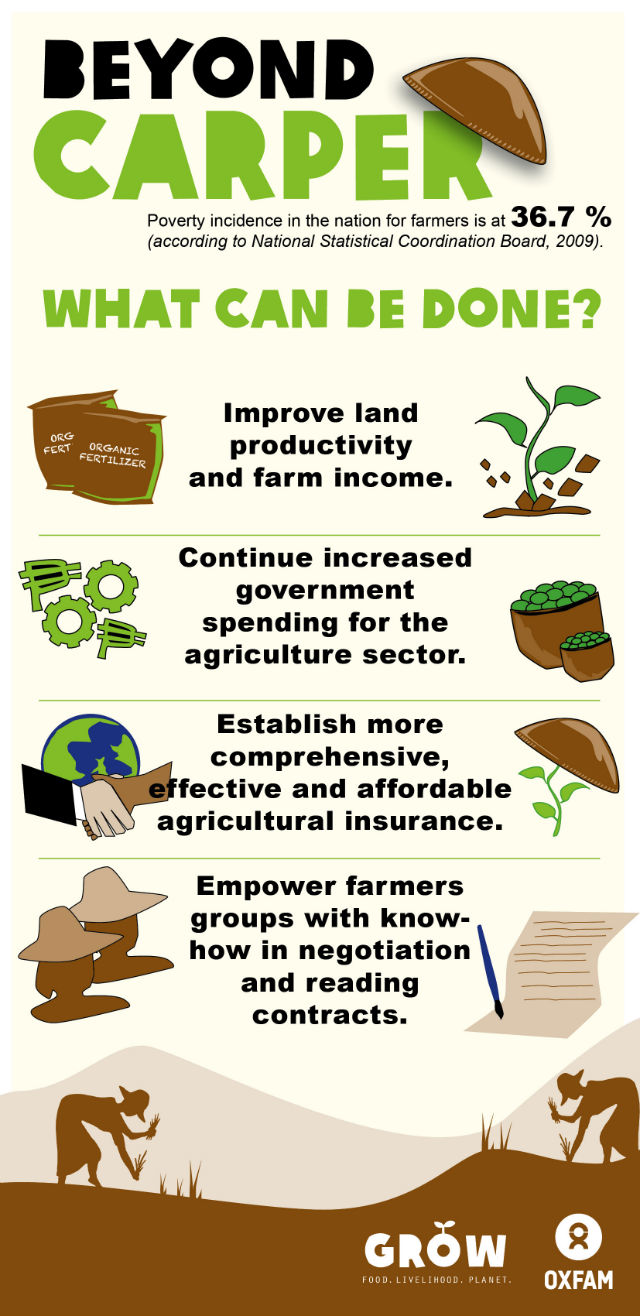SUMMARY
This is AI generated summarization, which may have errors. For context, always refer to the full article.
 Exactly 25 years ago today (June 10), the 8th Congress passed the Comprehensive Agrarian Reform Law. It sought to distribute land in the spirit of social justice. Upon enactment of RA 9700, or the Comprehensive Agrarian Reform Program Extension with Reforms (CARPER), which was passed in July 2009, the Department of Agrarian Reform (DAR) had already given the balance for Land Acquisition and Distribution (LAD) to distribute around one million hectares of agricultural lands.
Exactly 25 years ago today (June 10), the 8th Congress passed the Comprehensive Agrarian Reform Law. It sought to distribute land in the spirit of social justice. Upon enactment of RA 9700, or the Comprehensive Agrarian Reform Program Extension with Reforms (CARPER), which was passed in July 2009, the Department of Agrarian Reform (DAR) had already given the balance for Land Acquisition and Distribution (LAD) to distribute around one million hectares of agricultural lands.
After four years, there are still 800,000 hectares to be distributed.
But beyond the inefficiency of land distribution to our small farmers and tillers (who account for almost a third of the nation’s work force of almost 37 million), there is the alarming fact that the agriculture sector contributes only around 11 percent of the nation’s Gross Domestic Product (GDP). This is indicative of the intense poverty that prevails in the said sector as more people compete over very little production. Poverty incidence in the nation is highest among fishermen with 41.4 percent, followed by farmers with 36.7 percent according to the National Statistical Coordination Board (2009).
More investment needed
Limited investments by the public and private sector are considered one of the most critical factors that contribute to the underdevelopment and stagnation of Philippine agriculture.
In terms of public expenditure, government spending for agriculture and fisheries grew by 52.3 percent from 1998 to 2005, reaching P47 billion in 2005 or P252 billion for the period. However, the said spending merely accounted for five percent of the government’s total spending for the same period (according to a 2007 report by the World Bank).
The agriculture sector has not been a priority for private capital and foreign investments. From 2000 to 2010, it only accounted for just .07 percent of the total approved local and foreign private investments, amounting to some 3 trillion pesos.
In 2010, local and foreign private investments in agriculture totaled only P2.3 billion or just .04 percent of the P542,603 billion, according to the Bureau of Investments.
Aside from investments, another concern is control and ownership of agrarian reform beneficiaries (ARBs) of the lands awarded to them. Small landholders face tremendous pressure from domestic and foreign agribusinesses looking to directly lease these lands, which leaves them working as mere farm workers on the lands they technically own.
More than lip service
To address the deteriorating state of the agriculture sector, our newly-elected national and local political candidates need to go beyond lip service and put forward clear and workable agenda for the agriculture sector. Here are some suggestions:
Improve land productivity and farm income. These can be addressed through the up-scaling of production and use of organic inputs/fertilizers, which have soil reconditioning characteristics. Use of organic inputs lowers cost of production and, subsequently, increases farm income.
Continue increased government spending for the agriculture sector. The existing limited resources allocated for the agriculture sector should be used for more strategic programs and infrastructure. An example of this would be the consolidation of operation of contiguous small farms into production “clusters”, while extending technical and financing support to achieve volume and quality production.
Establish more comprehensive, effective and affordable agricultural insurance. Agricultural insurance increases a farm’s resiliency to climate change impacts and market fluctuations. Partnering production clusters with established and reputable agribusiness corporations who have access to global markets will also lessen market risks.
Empower farmers’ groups with know-how in negotiation and reading contracts. With the help of CSOs, NGOs, government should assist farmers groups and cooperatives in building their capacity to determine the financial viability of proposed agribusiness ventures. Teach them how to determine and demand for fair, if not favorable, terms of contracts/agreements.
The 16th Congress is opening and the president is slated to give his 4th State of the Nation Address (SONA) in July. Where their promises and discussion lead to will mean the recovery—or not–and the true meaning of land reform stays defined and genuinely pro-farmers. – Rappler.com

Ernie Lim is one of the advisers and volunteer coordinator of AR NOW!, a coalition of NGOs and CSOs working together towards agrarian reform.
This article is part of the Growing A Better Future Opinion Series–an Oxfam campaign for better ways to grow, share and live together. It’s a campaign for the billions who eat food and over a billion of men and women who grow it, to share solutions for a more hopeful future in which everyone always has enough to eat. May 31 is National Fisherfolk Day.
Oxfam is an international confederation of 17 organisations networked together in more than 94 countries, as part of a global movement for change, to build a future free from the injustice of poverty. In the Philippines, Oxfam works with poor people to sustain their livelihoods, and reduce their risks to natural and human-made disasters and climate change impacts. Oxfam strives to enable poor people to have a voice in economic issues affecting them. Oxfam also supports poor women as they lead in transforming unequal social and economic relations.
Add a comment
How does this make you feel?





There are no comments yet. Add your comment to start the conversation.